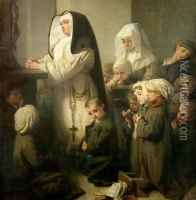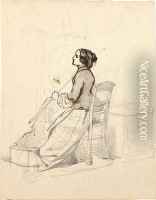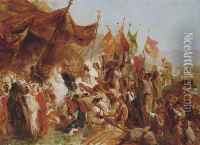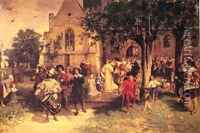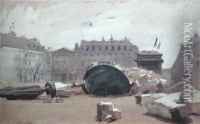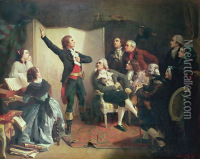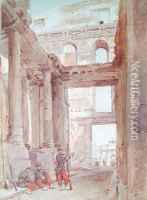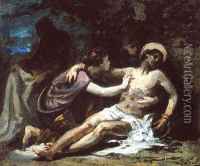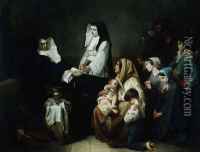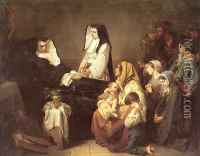Isidore Alexandre Augustin Pils Paintings
Isidore Alexandre Augustin Pils was a renowned French painter born on July 19, 1813, in Paris, France. He was known for his historical and genre paintings, as well as for his mastery in depicting military subjects. Pils came from an artistic background; his father was an embroiderer, which perhaps influenced his early interest in the arts.
Pils initially studied under François-Édouard Picot and later entered the École des Beaux-Arts in Paris. His talent was recognized early on when he won the prestigious Prix de Rome in 1838 for his painting 'The Death of Timophanes,' which allowed him to study at the Villa Medici in Rome. During his time in Italy, Pils was deeply influenced by the Italian masters, and his style began to take on the characteristics of Romanticism, which was prevalent in his era.
Upon his return to France, Pils achieved great success with his painting 'Rouget de Lisle Singing the Marseillaise for the First Time at the Home of Dietrich, Mayor of Strasbourg,' which depicted the famous scene of the French Revolution. This painting, exhibited in the Salon of 1849, earned him a second-class medal and was subsequently purchased by the state.
In the 1850s, Pils was commissioned to paint various works for the state, including decorations for the ceiling of the Grand Staircase of the École des Beaux-Arts and later for the Hôtel de Ville in Paris. His work took on a more official character as he was appointed professor at the École des Beaux-Arts in 1863, and in 1865 he was made a Knight of the Legion of Honour.
Pils continued to paint military subjects, and his experiences during the Crimean War further informed his work. His firsthand observation of the French army on campaign allowed him to create vivid and accurate representations of military life. One of his most famous works from this period is 'The Battle of the Alma,' which solidified his reputation as a leading military painter.
Isidore Alexandre Augustin Pils passed away on March 3, 1875, in Douarnenez, France. His legacy lives on through his influential works that captured the spirit and events of his time, and he is remembered as a key figure in 19th-century French painting.
